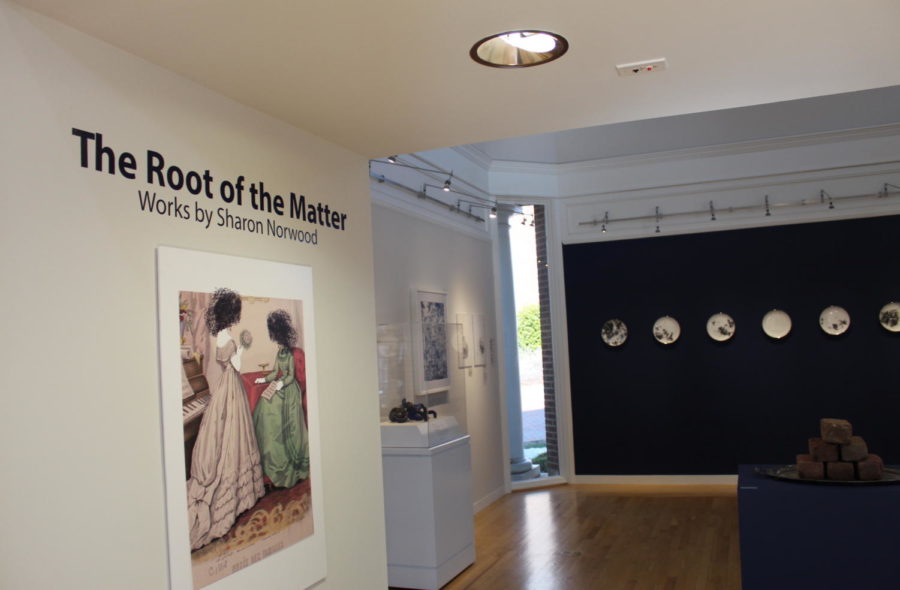“The Root of the Matter” examines identity
Sharon Norwood used digital collage as well as ceramic art to reflect on historically obscured identities
February 15, 2022
Sharon Norwood’s “The Root of the Matter” and other works are currently on display in the Watson Galleries at Washington and Lee University.
The exhibit, which explores historically obscured racial and gender identity, opened Feb. 3 and will remain in the Watson Galleries until May 28.
Sharon Norwood is a Jamaican-born contemporary artist who attended University of South Florida to obtain her BFA in Painting. She then attended Florida State University, where she received her MFA in Studio Art.
Norwood now resides and keeps a studio in Savannah, Georgia. Her art questions both historical and present events, and she said she hopes to inspire conversations about race and identity through her work. To do so, she uses a variety of mediums.
“The Root of the Matter” features digital collage on watercolor paper. Student curator Ayomiposi Oluwakuyide, ’24, spoke on the themes of the exhibit.
“It is a commentary on beauty standards and questions who fits and who created them,” Oluwakuyide said.
In much of her art, including pieces in “The Root of the Matter” exhibit, Norwood conveys her message through use of the curly, not-straight line, which serves as a metaphor for the Black body.
In some of her work, Norwood purposefully obscures the faces of women in historical dress to evoke consideration of who was hidden at the time.
Oluwakuyide says she immediately picked up on the visual clue of the linework.
“[I] automatically saw the line as hair,” Oluwakuyide said.
The piece “The Root of the Matter V” portrays two women with their faces covered by Norwood’s quintessential curly line. Her interest in the curly line began with the “Split End Series,” featuring ink drawings on paper.
These pieces directly connect the curly line to Black women’s hair. Norwood discussed her interpretation of the drawings.
“In these works, my thought was to unpack learned assumptions. To learn to see without judgment, to trust the line and the mark,” Norwood said. “In the end, hair, in all its magnificent beauty.”
Norwood gets creative with her artistic medium while trying to unpack assumptions.
In “Savannah Greys,” she uses bricks from the Hermitage Plantation in Savannah. Norwood found the bricks, which date back to the 1800s and were made by enslaved peoples, around her home. Norwood found meaning in them by using the bricks to create a sculpture that calls viewers to reflect on the “invisible labor” required in their formation.
More of Sharon Norwood’s pieces include porcelain china plates and tea services.
The vintage Chinese porcelain reflects on the history of white supremacy and the commodification of other cultures. In placing curly lines on these pieces, Norwood expresses being “visible but absent.” Even without human figures, her ceramic pieces address social and political issues.
“It brings together history and the present, as people are reaping the fruits of labor that wasn’t ours to begin with,” Oluwakuyide said. “History should be acknowledged. People should take it a step farther in identifying the ways history still affects us and then take steps to move forward.



